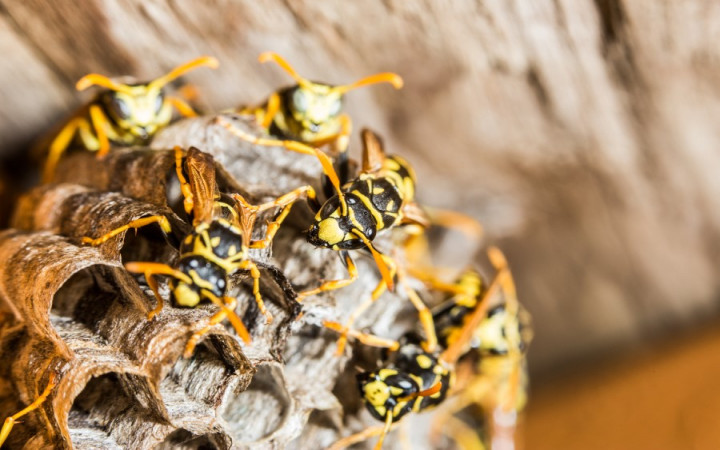Today’s Wonder of the Day was inspired by Ms. Gildea’s 3rd Grade Class from North Andover, MA. Ms. Gildea’s 3rd Grade Class Wonders, “How do bees and wasps make their hives and what material is it made from?” Thanks for WONDERing with us, Ms. Gildea’s 3rd Grade Class!
Have you ever been playing outside when you hear a tell-tale buzzing sound? From experience, you know that you don't want to get stung by any flying insects. You've been stung before and you know how painful it can be.
You look up and you see a familiar sight attached to the underside of the eaves of your house. It looks a bit like a paper honeycomb, and it's the center of attraction for a swarming group of flying insects. What is it? A wasp nest!
There are three main types of wasps you're likely to run into from time to time: paper wasps, yellowjackets, and hornets. They are all similar in that they make paper nests. However, they differ in the size, shape, and location of their nests.
Paper wasps, for example, tend to build small, umbrella-shaped nests under eaves and overhangs. Hornets build large nests shaped like a football. You can often find them hanging from a high branch of a tree. Yellowjackets prefer to make their nests underground.
Where do wasps get the paper they use to build their nests? Do they steal paper from school children while they're at recess? Not hardly! They actually make their own building materials by turning raw wood into paper pulp.
A wasp queen begins the building process by selecting a suitable site for a nest. She then searches for sources of wood fiber, such as trees, logs, fences, and even cardboard. Using her strong jaws, the queen scrapes off bits of wood fiber to use.
With a mouthful of wood fibers, the queen uses the saliva in her mouth to break down the wood fibers until they form a soft paper pulp. She then flies her mouthful of paper pulp to her chosen building site to begin construction of the nest.
Worker wasps help to form the soft paper pulp into multiple hexagonal cells. As the pulp dries, it forms a sturdy paper nest where young wasps will be born and develop. Some wasps may also use mud to strengthen their nest structure. As a wasp colony continues to grow, the queen and her workers continue to add hexagonal cells to the nest to accommodate new wasps.
Although made out of paper, wasp nests are sturdier than you might expect. Nevertheless, they will decompose naturally over the course of the winter, due to weather and other factors. That means that each spring a queen wasp must choose a new nesting site and start the nest-building process all over again.





